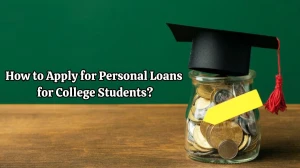
When Does Student Loan Repayment Start? How to Prepare to Start Paying Student Loans Again?
Student loan repayment typically commences six months after a student graduates or drops below half-time enrollment, allowing for a transitional period into the workforce or further education.
Updated Dec 19, 2023
On This Page
When Does Student Loan Repayment Start?
Repayment of federal student loans typically begins six months after the borrower either graduates or drops below half-time enrollment. This grace period allows students to transition into the workforce or further education before they are required to start making payments.
However, it's important to note that PLUS loans enter repayment once the loan is fully disbursed, with a deferment option available for certain circumstances. For graduate or professional student PLUS loan borrowers, an automatic deferment is granted while they are in school at least half-time, and an additional six months after leaving school or dropping below half-time status.
Parent PLUS loan borrowers have the option to request a deferment, which similarly includes a grace period while their child is enrolled at least half-time and for six months following their child's departure from school or transition to part-time status. Additionally, if a borrower who has already begun repaying their loans decides to return to school on at least a half-time basis, they can obtain a deferment to temporarily suspend their loan payments.
When Do Student Loan Payments Resume?
Federal student loan payments resumed in October, concluding a three-and-a-half-year hiatus initiated during the COVID-19 pandemic in March 2020. Interest on these loans began accruing from September 1, 2023. Borrowers need to be aware of their specific due dates, which can be found on their monthly bill, by contacting their loan servicer, or by accessing their online servicer account.
For those facing financial challenges, a 12-month student loan "on-ramp" provides temporary protection from default and credit harm for missed payments between October 1, 2023, and September 30, 2024. However, it's crucial to recognize that interest will accumulate during this period, contributing to the overall amount owed.
With federal student loan bills back in effect, borrowers are encouraged to prepare by locating their loan servicer, updating contact information, exploring income-driven repayment plans, and considering the recent IDR plan, SAVE, introduced by President Biden. Staying informed about potential changes in student loan forgiveness policies is essential, given the current hold on broad cancellation.
Discover MarketsHost, your source for practical financial advice and business tips.
How to Prepare to Start Paying Student Loans Again?
Preparing to restart student loan payments? Follow these simple steps to get ready: find your loan servicer, update contact details, and assess your budget. Consider automatic payments and understand different repayment options to make the process smoother. Be cautious about refinancing federal loans, as it may lead to the loss of beneficial features like forgiveness.
Identify Your Loan Servicer
Log in to your account at StudentAid.gov to review the list of your federal loans and get details about your loan servicer. Ensure you have the servicer's name and contact information.
Update Contact Information
Make sure your contact information is accurate with your loan servicer to receive important notices regarding your payments.
Assess Your Budget
Track your spending for a month to understand where your money is going. Distinguish between essential and discretionary expenses and be prepared to cut back on non-essential spending to accommodate loan payments.
Automatic Payments
Sign up for automatic payments, which not only reduce the risk of late payments but can also qualify you for a 0.25% interest rate reduction.
Review Repayment Options
Explore the federal loan repayment options, including standard repayment plans, graduated repayment plans, and income-driven repayment plans. Consult your loan servicer or a financial adviser to understand the pros and cons of each option.
Consider Income-Driven Plans
If you anticipate changes in your income or employment, consider income-driven repayment plans that adjust your monthly payments based on your income.
Avoid Refinancing Federal Loans
Be cautious about offers to refinance federal loans, as it involves taking out new private loans, potentially losing the benefits that come with federal loans, such as forgiveness and income-driven repayment plans.
- Explore Employer Assistance: Investigate whether your employer offers assistance for student loan repayments or matching contributions to retirement plans in exchange for student loan payments.
- Deferment or Forbearance: If you experience financial hardship, inquire about options such as deferment or forbearance to temporarily suspend payments, but be aware of the potential interest accrual during forbearance.
- Fresh Start Program (For Defaulted Loans): If you were in default before the payment pause, explore the Department of Education's Fresh Start program to restore your loan status and improve your credit. Take action within the specified time frame.
What is a Student Loan?
A student loan is a form of financial aid designed to help individuals cover the costs associated with higher education, such as tuition, fees, books, and living expenses.
These loans are offered to students and their families to bridge the financial gap between the cost of education and the resources available through scholarships, grants, work-study programs, and personal savings. Understanding the key aspects of student loans is essential for anyone considering higher education financing.
What Are the Types of Student Loans?
Student loans are divided into federal and private categories. Federal options, supported by the U.S. Department of Education, encompass subsidized, unsubsidized, PLUS, and consolidation loans, boasting advantages like favorable interest rates and adaptable repayment plans.
In contrast, private student loans, extended by banks and financial entities, operate on credit-based eligibility, lack federal protections, and offer variable terms, serving as an alternative when federal resources prove insufficient. Grasping the nuances of these loan types is pivotal for making informed decisions in financing higher education.
1. Federal Student Loans
Federal student loans are loans offered by the U.S. Department of Education to help students and their families cover the cost of higher education. These loans are generally more favorable due to lower interest rates, flexible repayment options, and borrower protections. There are several subtypes of federal student loans:
a. Direct Subsidized Loans
- Available to undergraduate students with financial need.
- The government pays the interest on the loan while you're in school, during grace periods, and deferment.
- Interest begins accruing after you graduate or drop below half-time enrollment.
b. Direct Unsubsidized Loans
- Available to undergraduate, graduate, and professional students regardless of financial need.
- Interest accrues from the moment the loan is disbursed.
- Borrowers are responsible for paying the interest.
c. Direct PLUS Loans
- Available to graduate or professional students and parents of dependent undergraduate students.
- A credit check is required for eligibility.
- Interest begins accruing immediately.
d. Direct Consolidation Loans
- Allows you to combine multiple federal student loans into a single loan with a single loan servicer and interest rate.
- Can extend the repayment term but may result in paying more interest over time.
2. Private Student Loans
Private student loans are offered by private lenders such as banks, credit unions, and online financial institutions. These loans can be used to cover educational expenses when federal loans are insufficient. However, they have some key differences from federal loans:
a. Credit-Based
Private loans typically require a good or excellent credit score, often around 670 or higher, to get competitive rates and terms. Undergraduates often need a co-signer, as they may not have an established credit history.
b. Limited Protections
Private student loans lack many of the borrower protections provided by federal loans. These include income-driven repayment plans, loan forgiveness for public service work, and generous payment-postponement programs in cases of financial hardship.
c. Variable Terms
Private loans offer variable or fixed interest rates, which can change over time. Federal loans generally have fixed rates.
How to Apply for Student Loans?
Navigating the process of applying for student loans requires a strategic approach, with distinct procedures for federal and private options. Whether you're seeking government-backed assistance or considering private lenders, understanding the steps is crucial. Here is the key steps involved in applying for both federal and private student loans.
Applying for Federal Student Loans
1. Get an FSA ID
- You and your parents (if you need their help) must create an ID online. It's like your signature for financial aid forms. You can do this on the studentaid.gov website.
2. Fill out the FAFSA
- Go to the FAFSA website, and start the application.
- Give your name, birthdate, and other personal details.
- Tell them about your family's money and income.
- Double-check everything to make sure it's correct.
- Submit the form. This helps decide how much federal financial aid you can get, like grants or student loans.
3. Get Your College's Offer
- After you get into college, they'll send you a letter.
- This letter shows how much financial aid you can get, including federal student loans.
4. Choose to Accept or Decline
- Read the letter carefully.
- If you want the loans, say yes.
- Follow your school's instructions to finish the process.
Applying for Private Student Loans
1. Find a Lender
- Look at different companies that give student loans. Compare them to see which is best for you.
2. Go to the Lender's Website
- Visit the website of the lender you picked.
3. Follow Their Instructions
- Do what the lender's website tells you to do. They might need information about your school and how much money you need. They could also ask about your co-signer, if you have one.
What Are the Pros and Cons of Student Loans?
Student loans come with both advantages and drawbacks, influencing individuals' decisions on higher education financing. On the positive side, they provide access to education for many who couldn't afford it otherwise, offering low-interest rates, deferred payments, flexible repayment plans, and the potential for loan forgiveness.
However, accumulating debt, interest accrual, credit score impact, limitations on future financial choices, and the non-dischargeability of loans in bankruptcy are significant concerns that borrowers must carefully weigh.
Pros of Student Loans
- Student loans enable individuals who may lack the financial means to attend college, expanding educational opportunities.
- Federal student loans often feature lower, fixed interest rates, providing predictability in repayment.
- During enrollment, students may be exempt from loan payments, allowing them to focus on studies without immediate financial burden.
- Flexible Repayment Options: Federal loans offer various repayment plans, including income-driven options, making post-graduation payments more manageable.
- Potential Loan Forgiveness: Programs like Public Service Loan Forgiveness forgive student loans after a specified period, particularly for certain public service or nonprofit jobs.
Cons of Student Loans
- Student loans can lead to substantial debt, taking years or even decades to repay, impacting financial well-being.
- Unsubsidized loan interest accumulates during school, increasing the overall debt if payments aren't made promptly.
- Student loans can negatively affect credit scores, especially with missed payments or defaults.
- High loan payments can restrict the ability to save, invest, purchase a home, or pursue other post-graduation financial goals.
- Student loans are typically not dischargeable in bankruptcy, making them challenging to eliminate.
When Does Student Loan Repayment Start-FAQs
1. When Does Student Loan Repayment Start?
Repayment of federal student loans typically begins six months after the borrower either leaves college or drops below half-time enrollment.
2. Are there any exceptions to the grace period for federal student loans?
Yes, some federal loans, such as PLUS loans and Direct Consolidation Loans, may not have a grace period.
3. Do private student loans have a grace period?
Grace periods for private student loans vary by lender. Some private lenders may offer a grace period, while others might not provide any grace period at all. I
4. Can I start repaying my student loans before the grace period ends?
Yes, you have the option to begin repaying your federal or private student loans before the grace period ends if you wish.
5. What if I'm facing financial hardship and can't make payments when the repayment period begins?
If you're facing financial difficulties and cannot make payments as the repayment period starts, you may be eligible for various repayment plans, including income-driven repayment plans.




